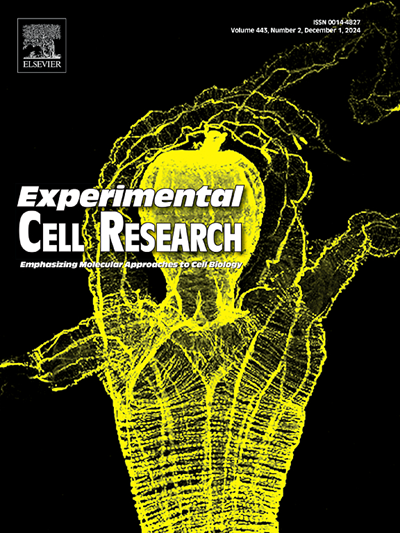黑色素瘤细胞与CAFs之间的动态相互作用:耐药性和免疫逃避的意义以及可能的治疗方法
IF 3.3
3区 生物学
Q3 CELL BIOLOGY
引用次数: 0
摘要
黑色素瘤是一种原发部位(皮肤、眼部和粘膜)预后各异的恶性肿瘤,通常在转移性和难治性情况下表现出特殊的治疗挑战。癌症相关成纤维细胞(CAFs)长期以来被认为是黑色素瘤肿瘤微环境(TME)中的关键组成部分,其来源多种多样,并表现出相当大的异质性。这些细胞积极产生细胞外基质(ECM),诱导血管生成,提供代谢支持,促进耐药,促进肿瘤进展和转移。在它们分泌的许多生长因子和细胞因子中,包括TGF-β和IL-6,它们通过招募免疫抑制细胞和抑制细胞毒性t细胞活性来帮助抗肿瘤免疫,促进免疫逃避。这些动态细胞塑造了肿瘤的生态位,使癌细胞得以存活和增殖,它们的存在与不良预后广泛相关。根据先前建立的环境如何严重影响肿瘤发展的基础,本综述试图描述黑色素瘤细胞与caf、ECM和信号分子之间复杂的相互作用。我们探讨了不同亚型的CAFs,它们的起源,以及它们是如何在黑色素瘤的促肿瘤作用中进化的。此外,我们回顾了针对CAFs的治疗武器库的最新进展,以实现更有效的治疗反应。通过详细介绍不同CAFs亚型在调节免疫反应和治疗结果中所起的特定作用,本综述将进一步深入了解在黑色素瘤中破坏CAFs介导的肿瘤支持的靶向治疗。本文章由计算机程序翻译,如有差异,请以英文原文为准。
The dynamic interplay between melanoma cells and CAFs: Implications drug resistance and immune evasion and possible therapeutics
Melanoma, a malignancy of varying prognoses across primary sites (cutaneous, ocular, and mucosal), typically displays peculiar treatment challenges in metastatic and refractory settings. Cancer-associated fibroblasts (CAFs) have long been recognized as pivotal components within melanoma's tumor microenvironment (TME), originating from various sources and manifesting considerable heterogeneity. These cells actively produce extracellular matrix (ECM), induce angiogenesis, provide metabolic support, contribute to drug resistance, and feed tumor progression and metastasis. Among the many growth factors and cytokines they secrete, including TGF-β and IL-6, they aid in anti-tumor immunity by recruiting immunosuppressive cells and inhibiting cytotoxic T-cell activity, contributing to immune evasion. These dynamic cells sculpt the tumor's niche, allowing cancer cells to survive and proliferate, and their existence is widely correlated with poor prognosis. Taking a cue from the previously established groundwork of how the surroundings heavily influence tumor development, this review attempts to profile the intricate interaction of melanoma cells with the CAFs, the ECM, and signaling molecules. We explore different subtypes of CAFs, their origins, and how they have evolved in their pro-tumorigenic roles in melanoma. Additionally, we review recent advancements in the therapeutic arsenal targeting CAFs to achieve a more effective treatment response. By detailing the specific roles played by different CAFs subtypes in the modulation of immuno-responses and treatment outcomes, this review will further provide insights into the targeted therapy to disrupt CAFs-mediated tumor support in melanoma.
求助全文
通过发布文献求助,成功后即可免费获取论文全文。
去求助
来源期刊

Experimental cell research
医学-细胞生物学
CiteScore
7.20
自引率
0.00%
发文量
295
审稿时长
30 days
期刊介绍:
Our scope includes but is not limited to areas such as: Chromosome biology; Chromatin and epigenetics; DNA repair; Gene regulation; Nuclear import-export; RNA processing; Non-coding RNAs; Organelle biology; The cytoskeleton; Intracellular trafficking; Cell-cell and cell-matrix interactions; Cell motility and migration; Cell proliferation; Cellular differentiation; Signal transduction; Programmed cell death.
 求助内容:
求助内容: 应助结果提醒方式:
应助结果提醒方式:


